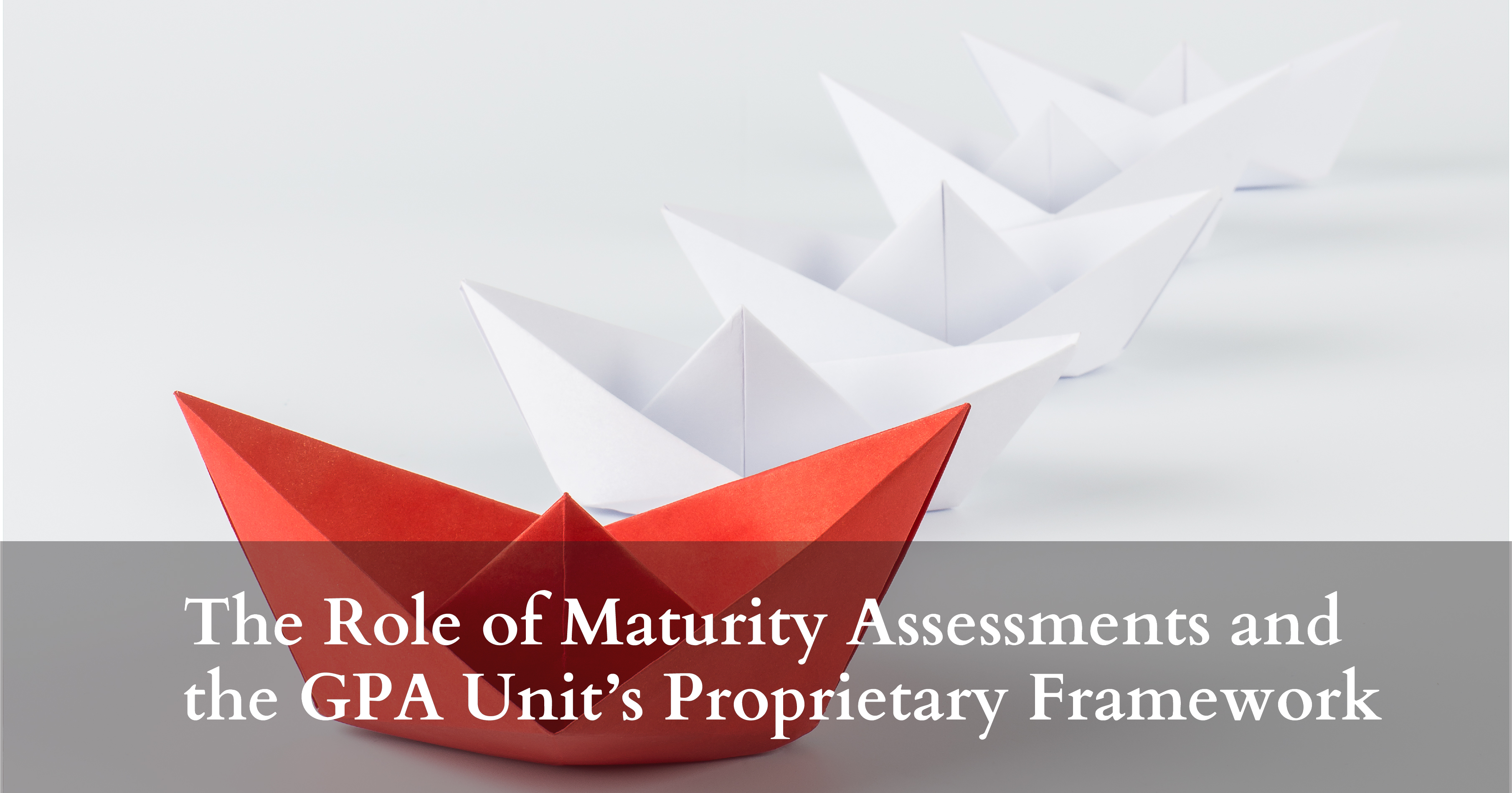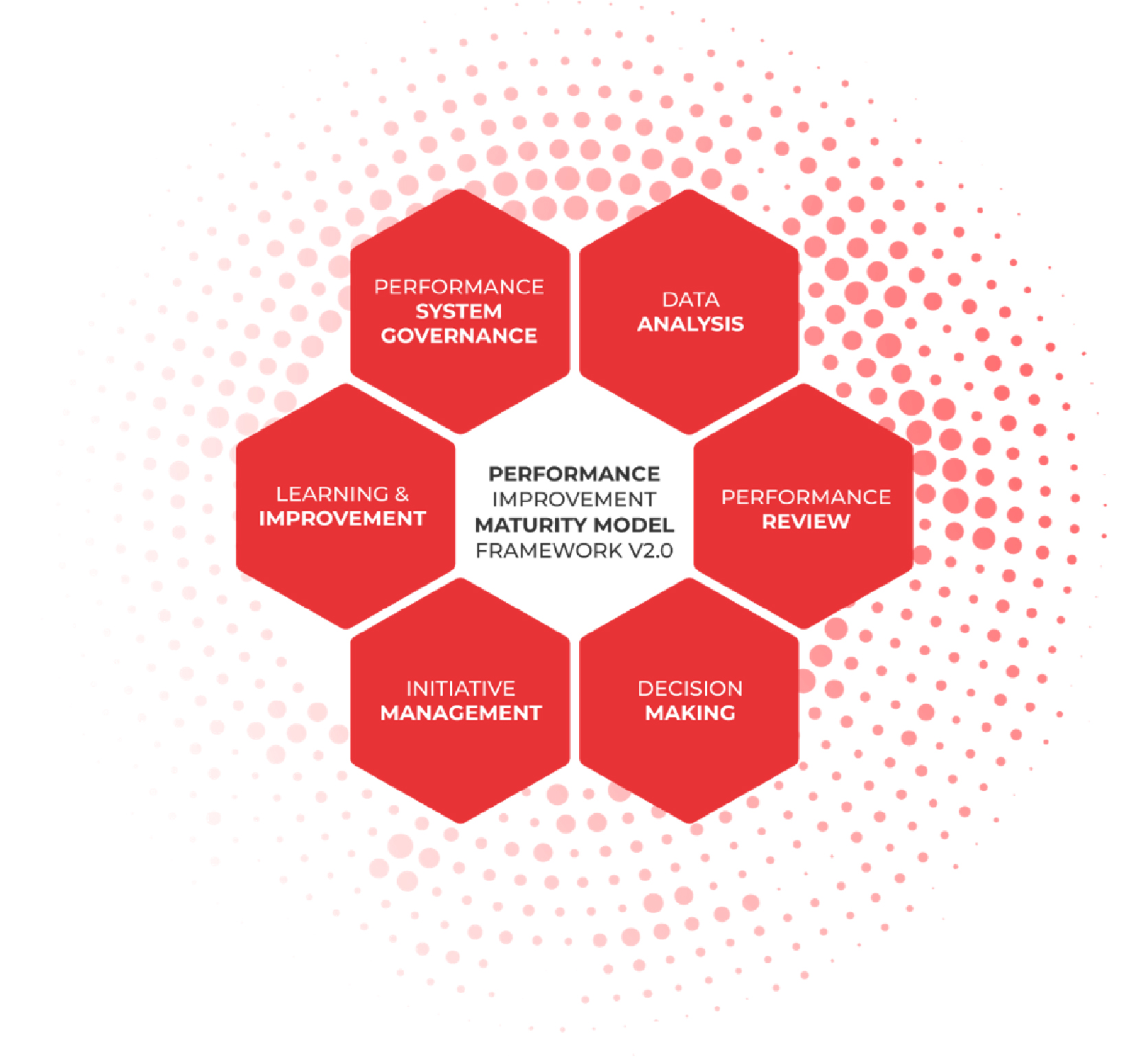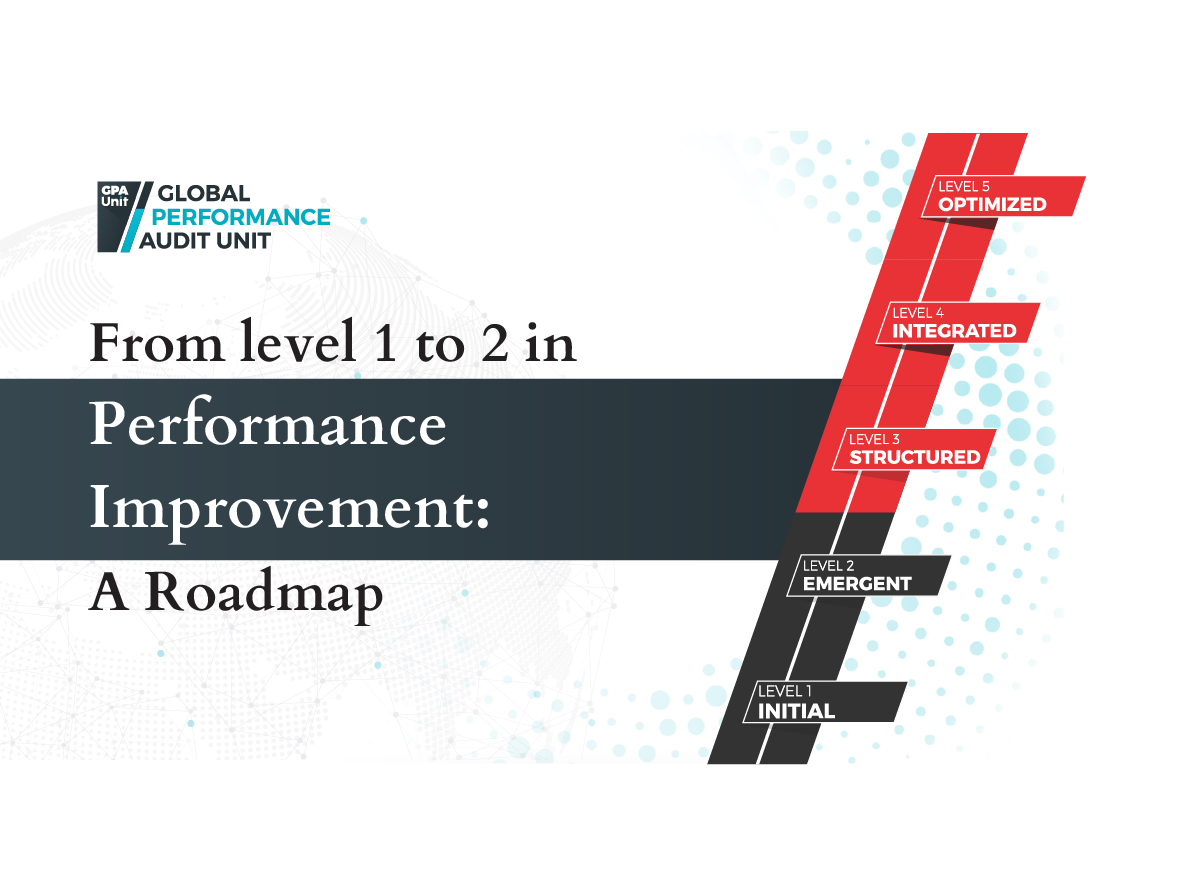The Role of Maturity Assessments and the GPA Unit’s Proprietary Framework

In an ever-evolving business landscape, organizations must continually refine their capabilities to stay competitive and achieve sustainable success. Among these, performance improvement stands out as a cornerstone for driving organizational growth, fostering innovation, and enhancing overall performance. The Global Performance Audit Unit’s (GPA Unit) Performance Improvement Maturity Model Framework provides a structured and strategic approach to assess and elevate this critical capability (see Figure 1).
What Is a Maturity Model?
A maturity model is a structured framework that evaluates an organization’s capabilities within a specific area, such as performance improvement, against a set of best practices by analysing the processes, procedures, and performance management tools used by organizations within the Performance Management System. It helps organizations identify their current level of maturity and compare it against best practices, uncover strengths and weaknesses, and develop a roadmap for improvement. Maturity models are typically measured on a scale—ranging from basic/rudimentary or non-existing practices at the lower levels to advanced and optimized practices at the highest levels.
The Performance Improvement Maturity Model Framework

The GPA Unit’s Performance Improvement Maturity Model Framework is a proprietary tool designed to evaluate the maturity level of an organization’s performance improvement capability. This framework examines six critical dimensions:
• Data Analysis – This evaluates the organization's capability to process and derive actionable insights from data. It includes the techniques employed to interpret KPI results and the integration of an enterprise resource planning (ERP) system for collecting and processing KPI data efficiently.
• Reporting – This assesses the quality assurance process which takes place prior to compiling performance reports as well as determining whether these reports are automatically generated using specialized business intelligence (BI) software solutions.
• Performance Review – This measures the effectiveness of conducting regular performance reviews with the purpose of supporting informed decision-making.
• Initiative Management – This assesses whether organizational projects designed to support strategic objectives are consolidated into a Portfolio of Initiatives, with comprehensive documentation stored in a centralized Library of Initiatives.
• Learning and Improvement – These evaluate whether the organization has an established Innovation Management Framework and a reward system to recognize the best ideas.
• Performance System Governance – This investigates the presence of all performance improvement processes being mapped and documented in a procedure or manual with clearly defined roles and responsibilities of stakeholders as well as the organization’s strategy for engaging stakeholders in various processes.
Organizations are classified into five maturity levels based on their alignment with best practices. At the lowest maturity level, organizations struggle to operate with a basic reporting process where data analysis is conducted without a standardized methodology, and reporting occurs informally. Performance review meetings are sporadic, lacking proper structure and focus. Accountability for initiative outcomes is often unclear, and there is limited transparency on how projects align with organizational objectives. Typically, performance improvement at this stage is inconsistent and does not effectively drive progress due to irregular reporting and the limited relevance of KPIs.
Additionally, uncoordinated learning efforts and minimal integration of feedback make it challenging for the organization to enhance its current practices. On the highest maturity level, organizations often utilize advanced data analysis techniques (e.g. modeling) and leverage BI tools for performance reporting and tracking project implementation progress. It is typical for organizations on this level to have a highly adaptable performance management system capable of responding effectively to changes. The system is deeply embedded across the organization, with stakeholders actively participating in efforts to enhance existing processes. A robust culture of learning and continuous improvement is a defining characteristic of these organizations.

The Benefits of Evaluating Performance Improvement Maturity
Evaluating the maturity of performance improvement capabilities provides several benefits:
• Clear Status Quo: Organizations gain a precise understanding of their current strengths and areas for improvement.
• Strategic Focus: Leadership can prioritize resource allocation and initiatives where they are most needed.
• Enhanced Decision-Making: Insights from the assessment enable data-driven decisions and targeted interventions.
• Benchmarking and Progress Tracking: The results serve as a benchmark for future assessments, allowing organizations to track progress over time.
• Cultural Shift: Higher maturity levels often correspond to a stronger culture of continuous learning and improvement.
Regular Reassessments: A Path to Continuous Growth
Maturity assessments are not one-time exercises. Regular reassessments are critical to ensure sustained progress and adapt to changing business environments. By periodically evaluating their performance improvement capability, organizations can refine their strategies, embrace innovation, and move closer to achieving the highest maturity level.
The Performance Improvement Maturity Model Framework offered by the GPA Unit is a powerful tool for organizations seeking to evaluate and elevate their performance improvement capability. By leveraging this framework, organizations can build a robust foundation for sustained growth, align practices with strategic objectives, and foster a culture of excellence. Whether your organization is just starting its maturity journey or aiming to reach the highest level, this service provides the insights and support needed to navigate the path to success.
| DATE | January 21st, 2025 |
| Category | Blog Posts |
| Reading Time | 6 |




